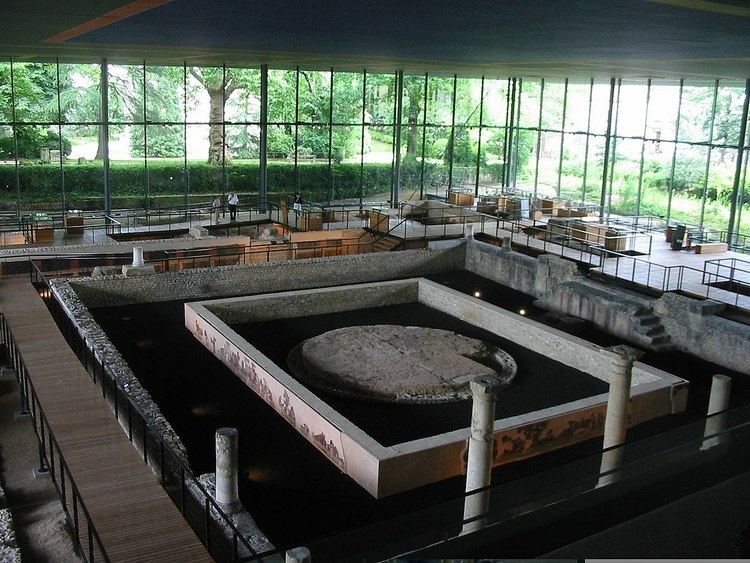Phone +33 5 53 53 00 92 | ||
 | ||
Established 12 July 2003 (2003-07-12) Owner Municipality of Perigueux Hours Closed now Sunday10AM–12:30PM, 2:30–6PMMondayClosedTuesday9:30AM–12:30PM, 1:30–5PMWednesday9:30AM–12:30PM, 1:30–5PMThursday9:30AM–12:30PM, 1:30–5PMFriday9:30AM–12:30PM, 1:30–5PMSaturday10AM–12:30PM, 2:30–6PMSuggest an edit Similar Musée d'art et d'archéol, Tour de Vésone, Périgueux Cathedral, Musée Militaire, Grotte de Tourtoirac | ||
The Vesunna Gallo-Roman Museum is a museum of Gallo-Roman art and archaeology in the town of Périgueux, located in the French department of the Dordogne. The Gallo-Roman ruins covered by a glass museum was constructed to protect a historical monument of France.
Contents
The excavations of the domus of Bouquets
In 1959, a few metres from the Vesunna Tower, the remains of a domus (wealthy urban town house) were discovered. During a project for the construction of rental housing on the site of municipal nurseries, archaeologists carried out surveys which brought to light Gallo-Roman walls adorned with painted plaster, preserved to a height of one meter high. What followed was a series of excavations:
Upon discovery, the site was named the villa des Bouquets, after the name of the street that ran parallel to it. It is today called the Vesunna domus.
The Creation of the museum
There soon appeared the need to ensure a good conservation of the site. The idea of a museum building is old. The first projects had been studied even before the end of the excavations. The decision was finally taken in 1992 by the municipal council of Périgueux. An architectural drawing competition took place in 1993. The museum is a project of Jean Nouvel, an architect born in Fumel, France and a winner of the Pritzker Prize in 2008. The main constraint that weighed on the project by Jean Nouvel was the impact of the future museum on a site that since 1963 had been classified as a historical monument. In response to this need, while ensuring maximum view ability to future visitors, Jean Nouvel has created a project whose philosophy can be summed up in two words: protect and reveal the site:
For the visitor who arrives in the garden of Vésone, the Museum is barely visible between the trees. The glass walls allow the site to be visible from the outside, the building looks like an open window on the past.
The Vesunna Museum opened its doors to the public on 12 July 2003.
During 12 to 14 July 2013, the Vesunna Museum celebrated its ten years with events such as a free concert, a giant picnic in the park of Vésone, a film projection and a reconstruction of a Roman camp at the weekend.
In 2013, the museum and its amenities were labelled disability friendly for a period of five years.
The Museum's collections
The permanent exhibition comprises the discoveries made on the territory of the Petrucores people (Gauls) with a territory equivalent to that of the current Dordogne department. Blocks of limestone from the rampart of the fourth century AD are hung along the "thick wall". The collection is divided into two parts: on the mezzanines traces of public life in the city of the Petrocores and objects of daily life on the domus.
The visit is conducted around the domus' central garden, where you can see a magnificent fresco representing rich marine fauna on a background of red Bordeaux, dating from the middle of the second century AD.
On the first floor, a room is used for temporary exhibitions. Until November 4, 2012, it was devoted to Jean-Claude Golvin. Discover the presentations from ancient cities from the work of the architect-archaeologist.
